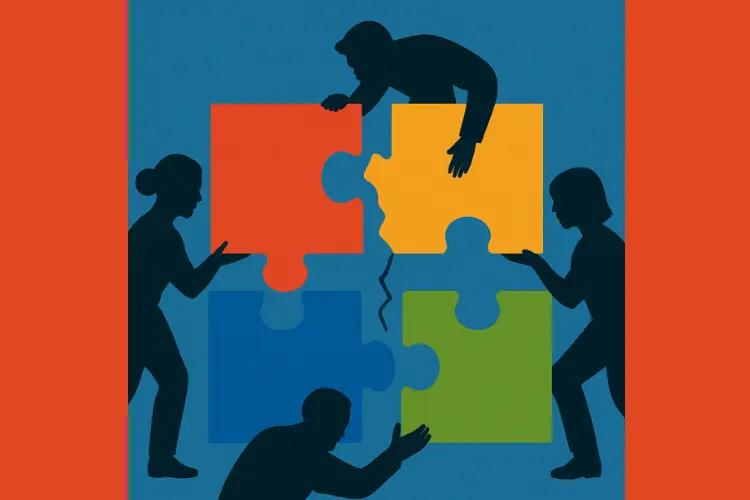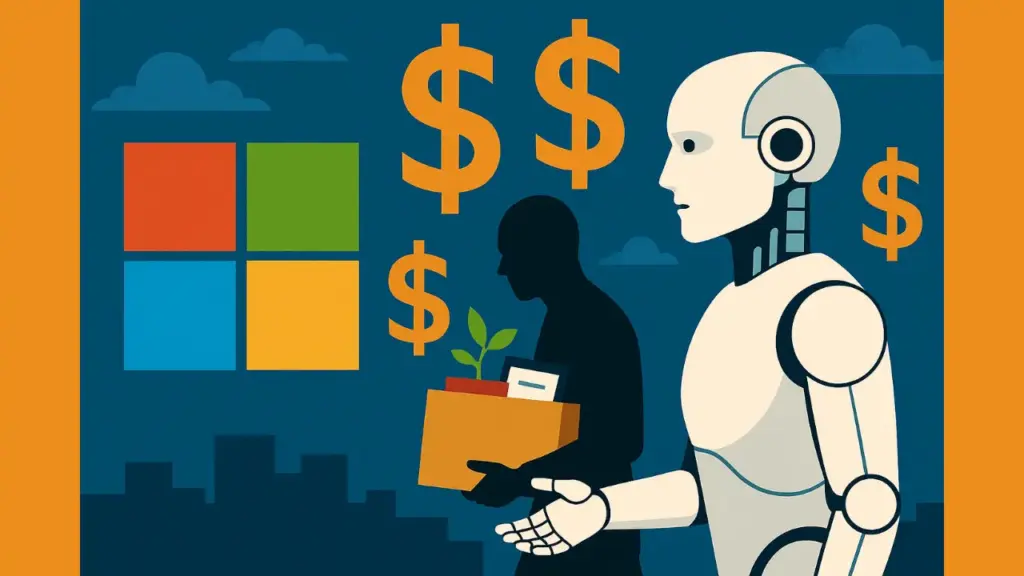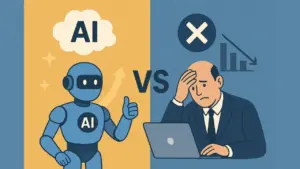Introduction: When Profit Comes at a Human Cost
Microsoft recently posted $26 billion in net profit on $70 billion in revenue—a massive financial win.
But this milestone came with something darker: widespread layoffs.
How can a booming company justify firing thousands?
Because it’s not about survival.
It’s about betting big on artificial intelligence.Instead of rewarding the teams behind its success, Microsoft is cutting them loose—chasing AI as the future, no matter the cost.
1. Record Profits, Ruthless Decisions
Microsoft is thriving. There’s no financial crisis.
Yet, they continue to slash jobs—not for cost-saving, but for reallocation.
This move signals a shift in values: profit over people.
Companies once celebrated profitability by rewarding staff.
Today, they cut teams to fund ambitious AI initiatives.
Many startups and firms led by a fractional CTO aim to balance tech growth with team stability.
But that balance is vanishing in big tech.
2. $80 Billion into AI: Smart Strategy or Reckless Burn?
Microsoft plans to invest $80 billion into AI and data infrastructure in 2025—$25 billion more than last year.
That’s a budget larger than the GDP of several nations.
But behind the big numbers lies a question:
Are these smart investments—or high-stakes gambles?
Each layoff frees up around $150,000 annually.
That savings isn’t going to team development—it’s fueling the AI engine.
Even ex-Microsoft engineer Ned Pyle warned:
“How many billions must be burned before this stops?”
3. Mixed Messages from Leadership
In a memo, Xbox chief Phil Spencer praised the strength of their platform.
In the same message—he announced layoffs.
Imagine someone saying their business is thriving—while laying off the staff that made it thrive.
The contradiction is staggering.
This kind of communication damages trust.
It suggests success isn’t shared—it’s hoarded.
4. Different Cultures, Different Choices
At CleanRouter, the first profitable quarter was celebrated with employee bonuses.
That’s what valuing people looks like.
Meanwhile, Microsoft followed its best quarter with a wave of job cuts.
This contrast reveals how tech culture is splitting.
Startups often led by fractional CTOs still prioritize team cohesion and morale.
At scale, that mindset gets lost in spreadsheets.
5. The Growing Fear Inside Microsoft
Reports from inside the company paint a grim picture.
Employees are left guessing who’s been cut.
There’s no transparency, only silence.
The result? Constant anxiety.
Workers are afraid to take vacations.
They fear missing targets tied to unclear AI metrics.
They worry that any mistake could be their last.
This fear kills creativity.
People stop innovating and start protecting themselves.
6. Engineers Reduced to Budget Numbers
Every laid-off engineer represents a line item removed—and funds redirected into AI.
The process is cold, fast, and feels like betting on machines over people.
Microsoft’s approach makes employees feel like disposable assets, not innovators.
Companies focused on sustainable growth often rely on fractional CTOs to guide transitions without sacrificing their teams.
Microsoft seems to be doing the opposite.
7. Teamwork Is Crumbling from Within
In high-pressure environments, collaboration is key.
But when job security is uncertain, teams fracture.
Employees report rising internal conflict.
Instead of building together, teams are competing for survival.
The company’s mission gets lost.
The culture erodes.
And innovation slows.
Leadership must realize: when fear takes over, progress stops.

8. Penny Wise, Billion Foolish
In an almost absurd twist, Microsoft reportedly removed Post-it notes and paper from supply closets—while spending billions on AI.
It’s a bizarre message: cut pennies on supplies, burn billions on tech.
To employees, it looks tone-deaf and demoralizing.
Such decisions send the wrong signal.
If you can’t offer clarity or care, people won’t give their best.
FAQs
1. Why did Microsoft reduce its workforce even after reporting high earnings?
Microsoft’s decision to downsize wasn’t driven by financial trouble. Instead, the company is choosing to redirect its capital into artificial intelligence projects—particularly in infrastructure, chips, and data centers—believing this investment will shape its long-term future.
2. What is the scale of Microsoft’s investment in artificial intelligence?
In fiscal 2025, Microsoft is planning to commit around $80 billion to AI development. This includes expanding cloud capabilities and building infrastructure to support AI growth, marking a significant jump from previous years.
3. How does a fractional CTO help in managing technology transitions?
A fractional CTO offers part-time executive guidance to businesses undergoing technological change. They help align innovation with team stability, often ensuring that companies adopt new tools without damaging team morale or core culture.
4. What challenges are employees facing inside Microsoft during this AI shift?
Many employees are experiencing uncertainty due to unclear communication around layoffs, unpredictable performance metrics, and a noticeable shift in company priorities. This has created an atmosphere of stress and job insecurity.
5. Will AI be able to fully replace software engineers in the near future?
AI can automate certain coding tasks and boost productivity, but it lacks the intuition, creative thinking, and problem-solving ability that experienced engineers bring to the table. Human developers remain essential for innovation and team-driven results.
Conclusion: Innovation Shouldn’t Come at the Cost of Humanity
Microsoft is placing a massive bet on AI.
But the cost is being paid by its people.
The company is trading a stable, experienced workforce for an uncertain tech future.
It’s a shift from human-driven progress to algorithmic ambition.
As someone who’s worked with early-stage startups and fractional CTOs, I’ve seen how compassionate innovation outperforms fear-driven restructuring.
Building strong teams leads to sustainable growth—not just flash-in-the-pan profits.
At StartupHakk, we believe that progress is best achieved with people—not at their expense.
If Microsoft doesn’t re-center its strategy around the humans behind the code, it risks losing far more than it gains.




